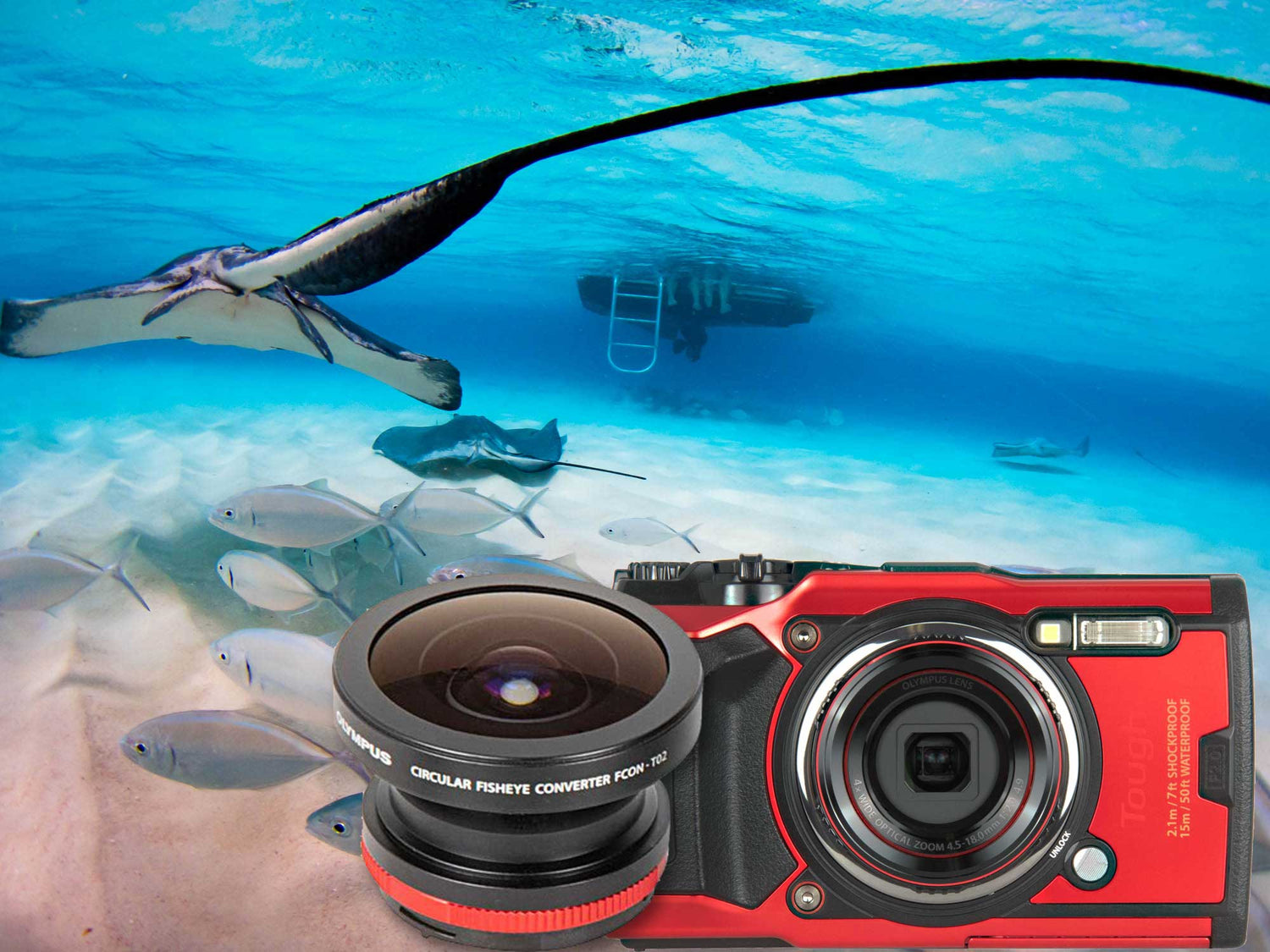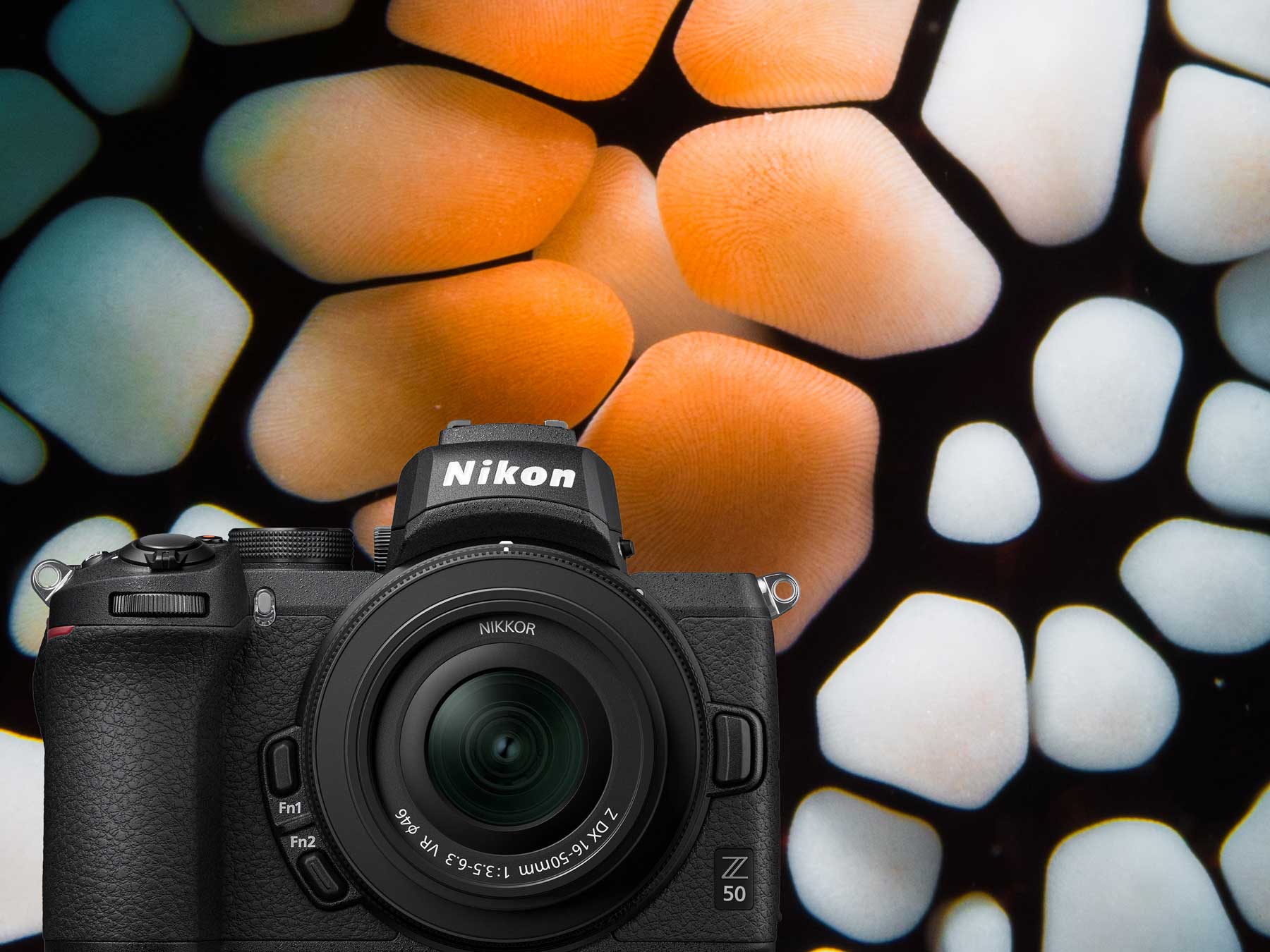By John Brigham
There are very few systems that can shoot sharp macro and wide angle on the same dive. I can count on one finger the number of systems that can go from full 180º circular fisheye to macro on the same dive without adding or removing wet lenses from the front of the housing.
Amazingly the same system is small enough to fit in a backpack and capable of supporting TrueTTL strobe exposure. And these are just a few of the things that make the Olympus Tough TG-6 with FCON-T02 wide angle lens one of my absolute favorite systems to shoot underwater.
I also love that the camera is waterproof on its own up to 50' (15.2m). While that's not usable up to recreational diving limits without a housing, it does make me a little more relaxed when assembling the housing or opening it on the deck of a boat.
These shots were taken in Grand Cayman on the wreck of the Kittiwake and at Stingray City. All shots were taken with the FCON-T02 Fisheye Lens behind the Dome Port # 64361 and TrueTTL strobe exposure via dual DS51 strobes and RC1 TTL Receivers # 4412.
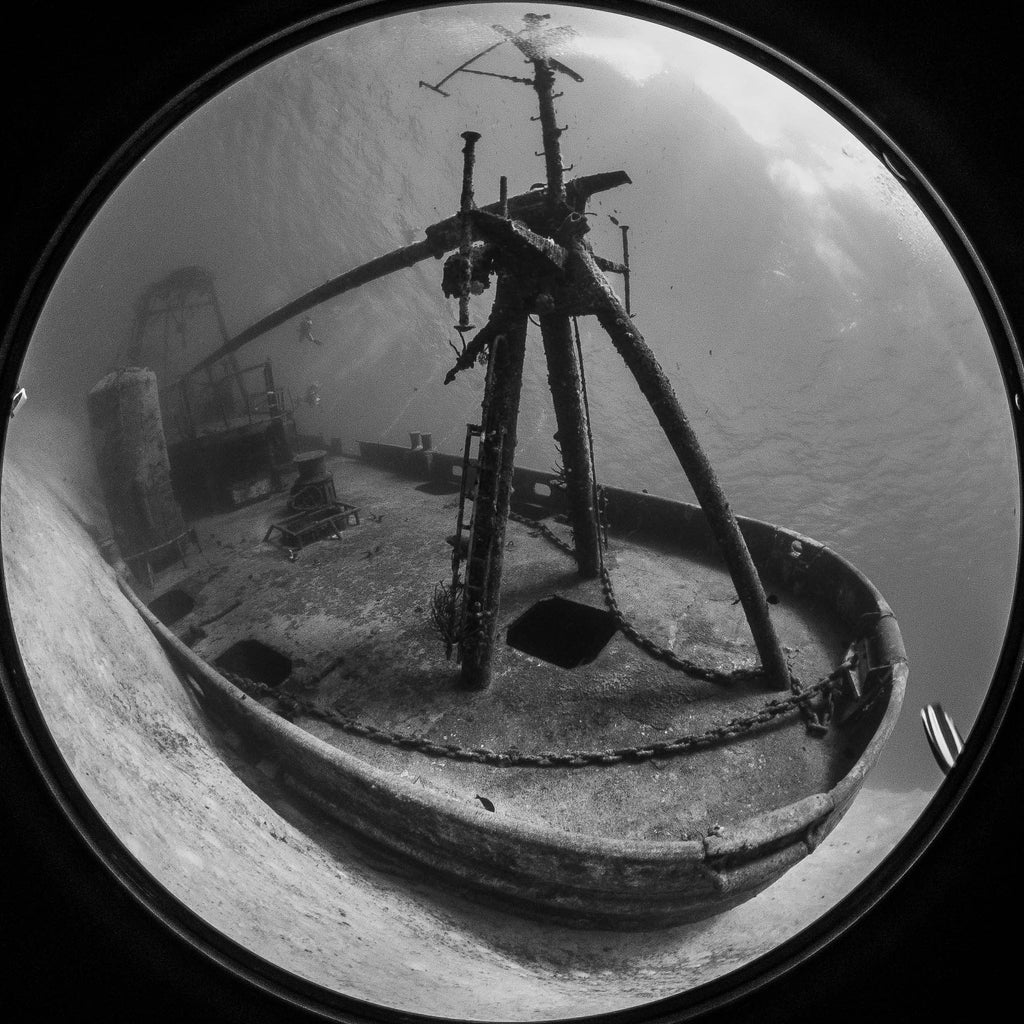
USS Kittiwake at a shallow depth off the shore of Grand Cayman. This isn't technically the same dive as the rest of the images, but it does show what the circular fisheye lens can do with man-made objects like a shipwreck. You would have to be much farther away to shoot this with an external wide angle lens which would result in a grainer, less defined shot.
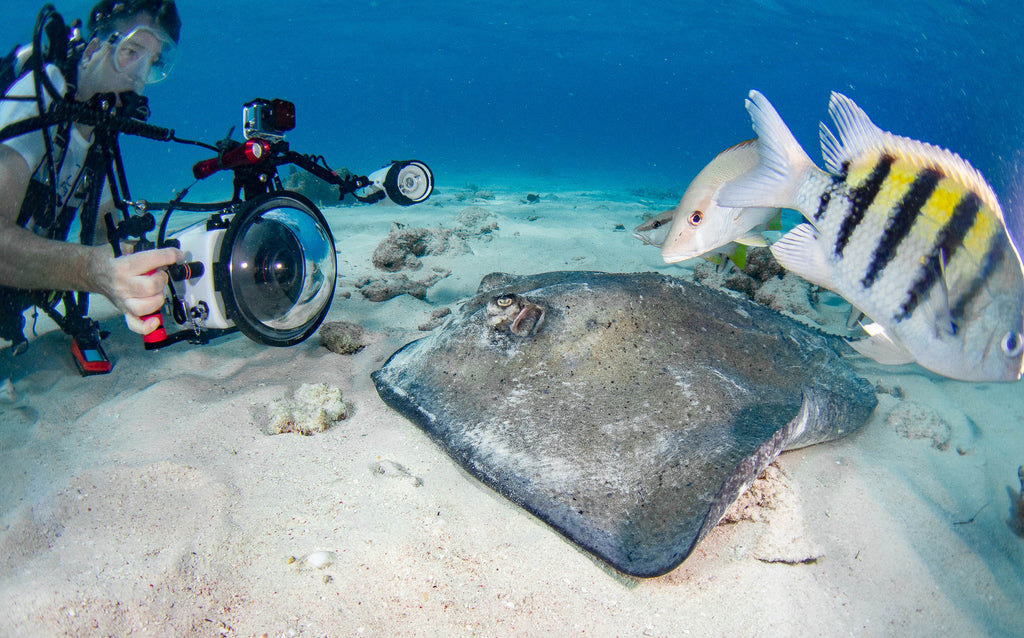
f/13 • 1/250 • With the camera zoomed to 8.4mm (around 14mm in the 35mm equivalent) it's still wide enough to capture a diver and a decent sized southern stingray. This image has been cropped to eliminate the small amount of vignetting present.

f/9 • 1/200 • At full wide angle you get the 180º circular fisheye effect and the resulting images are very sharp all around the edges.

f/18 • 1/100 • Zoomed to 18mm you get the equivalent of a full frame camera shooting with a 30mm macro lens. Any edge softness at this focal length is due to the extremely shallow depth of field at this focal length - not the dome or lens. This is the same animal from the previous shot and the image was taken only about 30 seconds later.

f/4.5 • 1/800 • This image shows the small amount of vignetting present when the camera is zoomed to 8.4mm (14mm equivalent). Using Content Aware Fill in Adobe® Lightroom or Photoshop is surprisingly simple and effective for camouflaging vignetting.
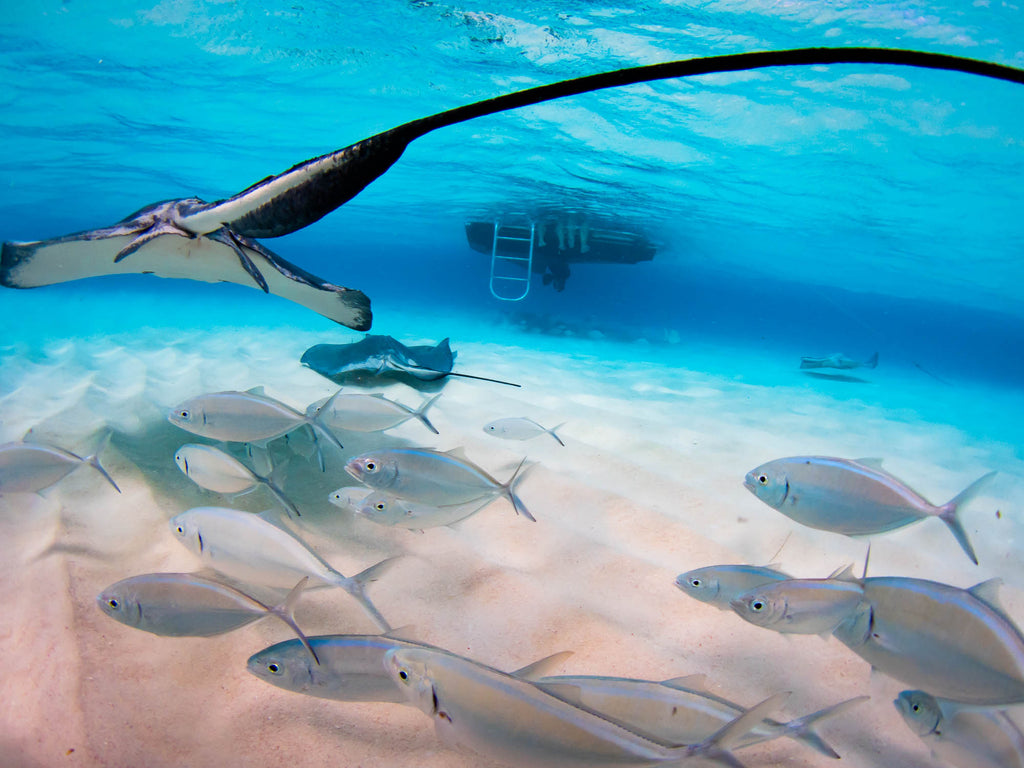
f/4.5 • 1/800 • Zoomed to 9.65mm (16.5mm equivalent) the vignetting due to the circular fisheye is completely eliminated.
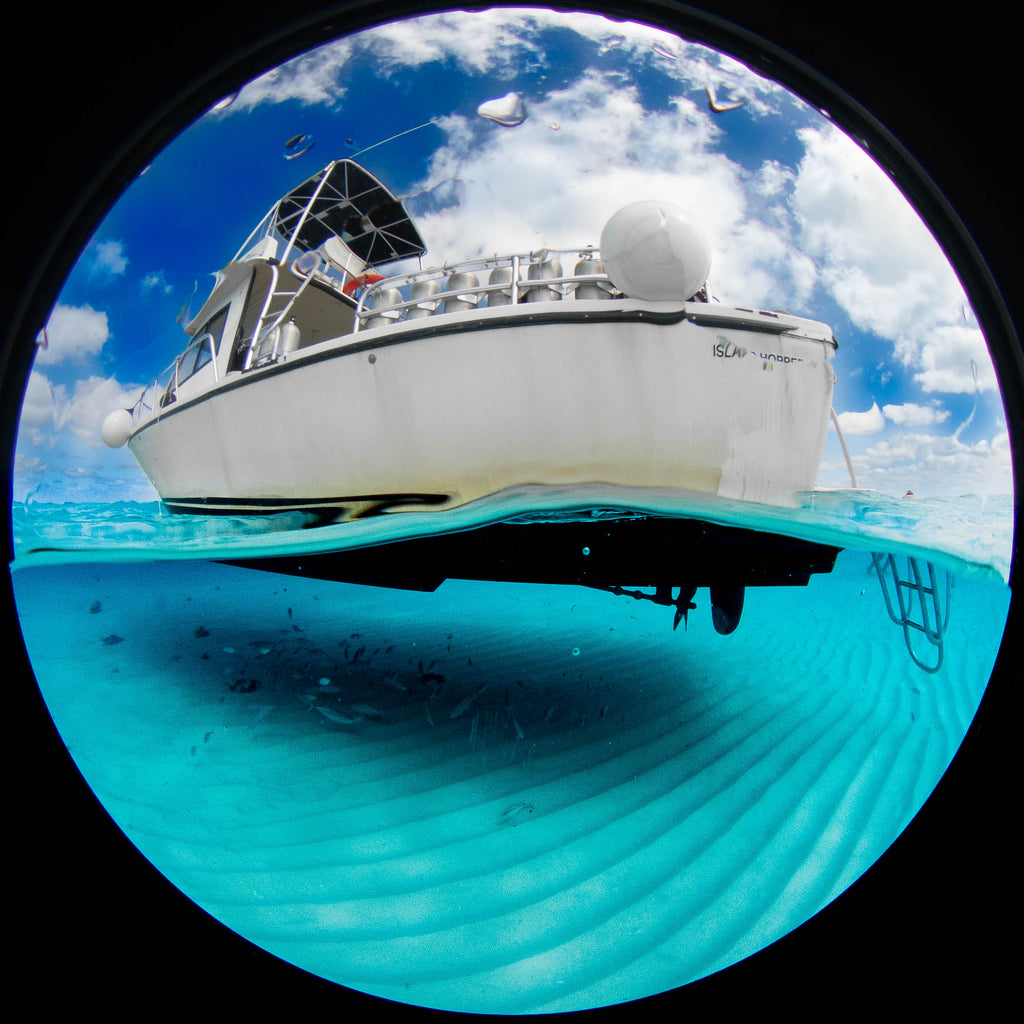
f/2.8 • 1/2000 • The circular fisheye lens combined with a really fast shutter speed gives you a super sharp water line when shooting over-under shots (half-in, half-out of the water). This kind of water line is impossible without a dry dome port on the front of the housing. It's also a cool effect that the waterline slightly over-hangs the edge of the circle due to refraction.
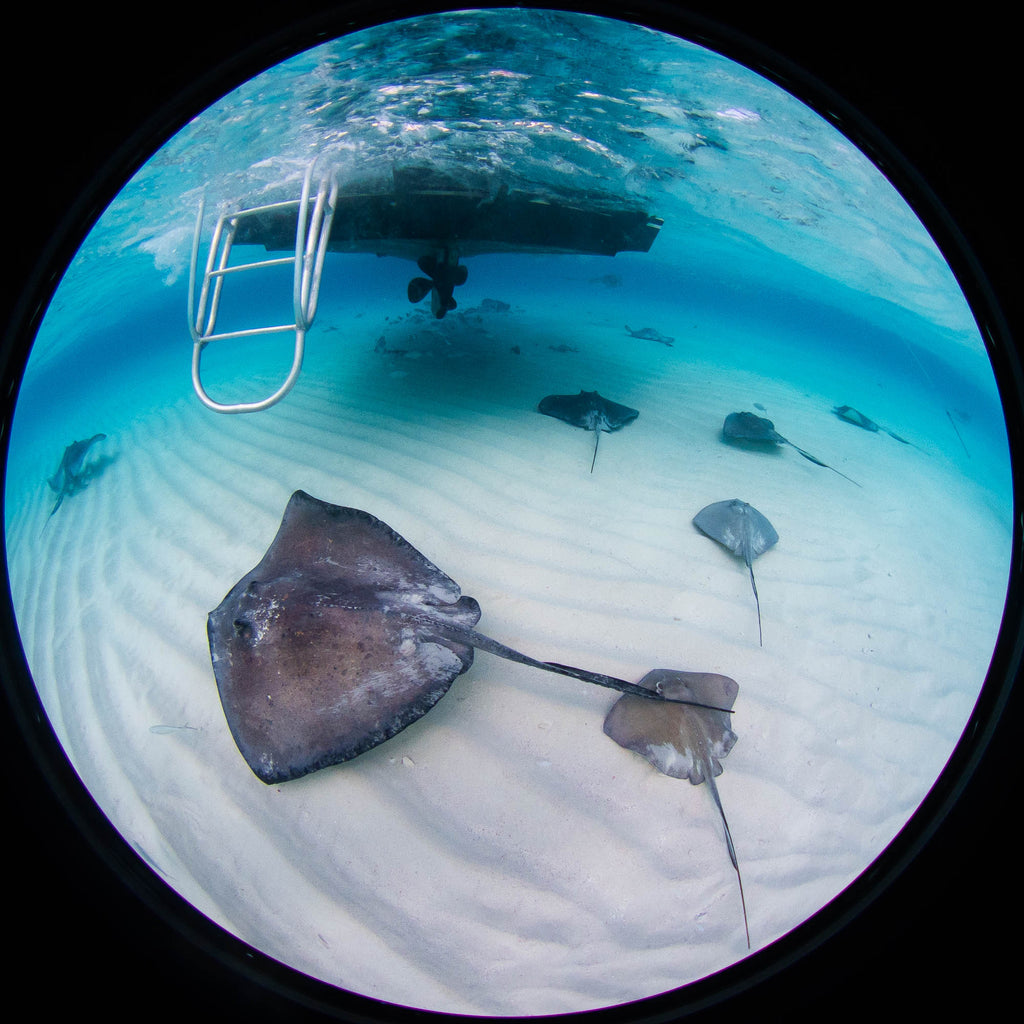
f/8 • 1/200 • The 180º circular fisheye perspective adds to the sense of scene and movement in the image.
 John Brigham is the Vice President & head of product development at Ikelite. He was born with a flair for design and an entrepreneurial spirit as son of Ikelite founder Ike Brigham. He worked his way up in the business and is a natural fit in the R&D side of things. John dives the equipment as much as possible to test product and put himself in the "fins" of the user. You may also find him on the other end of an email or phone call when you reach out for product advice and support. When he's not underwater he's flying drones, setting off rockets, training his German Shepherd "T2", and spending time with his family.
John Brigham is the Vice President & head of product development at Ikelite. He was born with a flair for design and an entrepreneurial spirit as son of Ikelite founder Ike Brigham. He worked his way up in the business and is a natural fit in the R&D side of things. John dives the equipment as much as possible to test product and put himself in the "fins" of the user. You may also find him on the other end of an email or phone call when you reach out for product advice and support. When he's not underwater he's flying drones, setting off rockets, training his German Shepherd "T2", and spending time with his family.
Additional Reading
First Look Olympus Tough TG-6 and FCON-T02 Circular Fisheye Lens
Why You Need a Fisheye Lens Underwater
Olympus FCON-T02 Circular Fisheye and Tough TG-6 Underwater Photos
How to Accessorize the Olympus Tough TG-5, TG-6 System
Stingray City Underwater Camera Settings and Technique
Underwater Wreck Photography Settings and Technique











